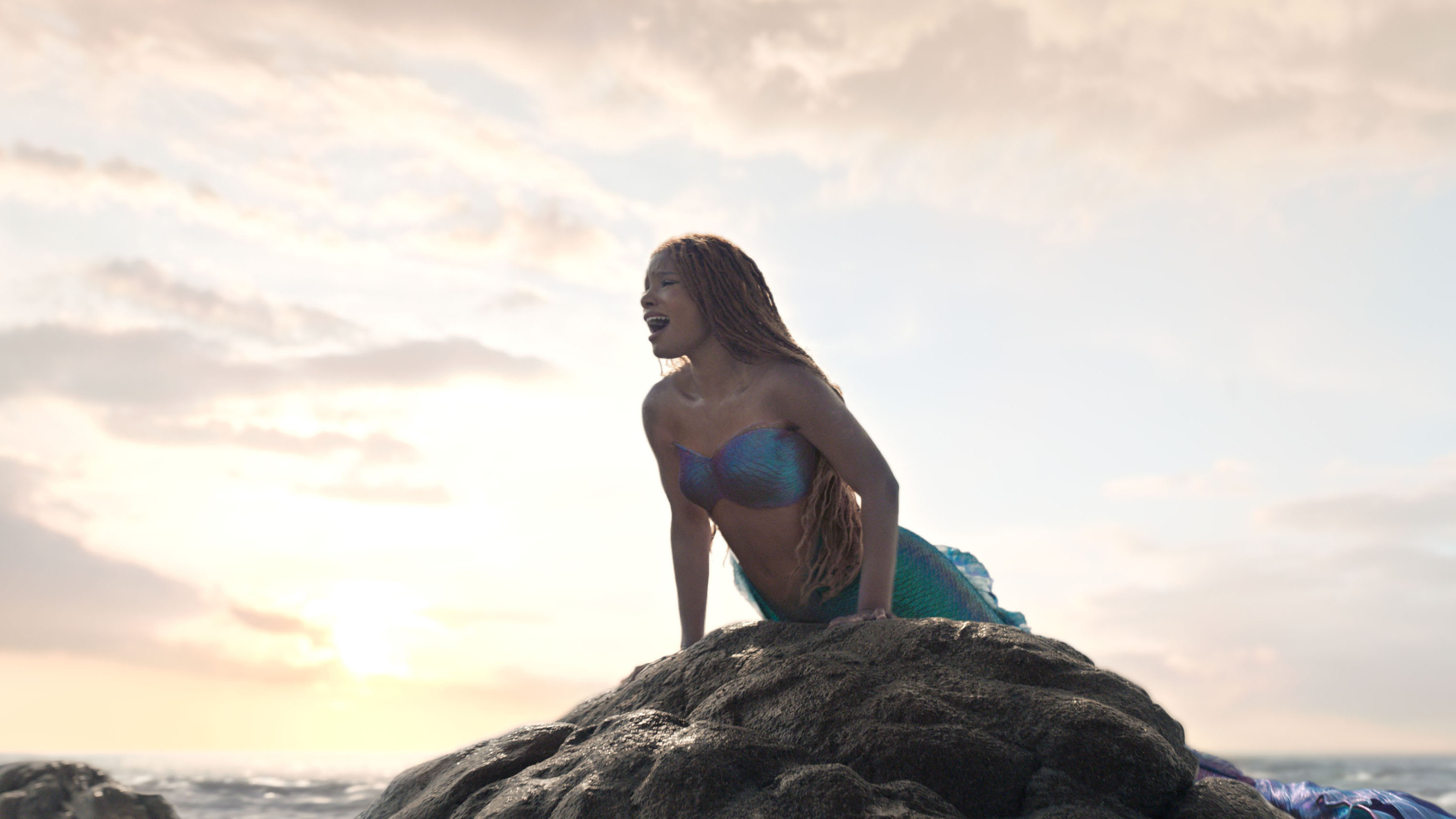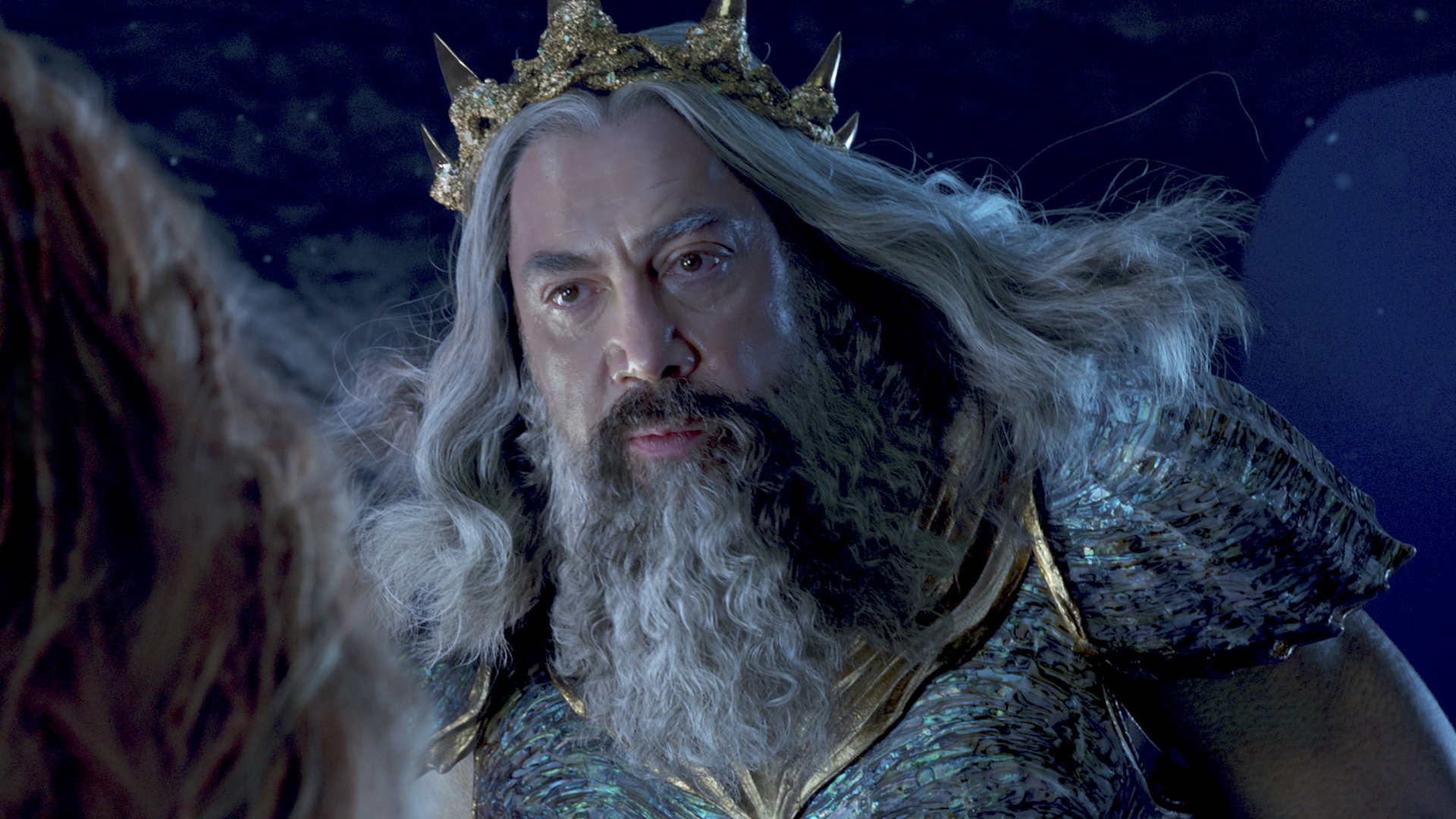
When the idea of making a live-action The Little Mermaid movie was first floated to director Rob Marshall, it was a very daunting task, he tells TechRadar. “On a scale of 1 to 10?” he says. “It was an 11! I thought, well how do we do this? It’s never been done before. How do we do an underwater musical; how do you create a live action version of that? It really was some uncharted territory for me.”
The result is a pleasingly effortless showstopper musical that really nails the songs. With Halle Bailey as the playful Ariel; Oscar-winning Javier Bardem as the mighty King Triton; Melissa McCarthy as Ursula the sea-witch and a gaggle of Ariel’s mer-sisters and sea creature friends, they all glide about weightlessly in an underwater kingdom; talking, singing and swimming under the Caribbean sea like it’s the most natural thing in the world, and not the result of years of meticulous staging, puppeteer work and photo-realistic CGI and digital effort.
With development starting back in 2018, Marshall pulled together his “A-team” of designers, and regular cinematographer Dion Beebe (who's also worked with the likes of Michael Mann and Jane Campion), who Marshall worked with since his 2002 Oscar-sweeping hit Chicago, for a long series of “methodology meetings”.

“There was an enormous amount of prep,” he explains. “I did something called pre-visualization, which was almost like doing a mini-movie so I could understand how the actors would move and how the cameras would move. Then I would communicate that to the stunt team, and the stunt team had to decide what sort of rigs they would need for specific moves, because if they’re moving through the water [in a certain motion], what’s that going to be on – and it was either a teeter-totter, or wires, or a tuning fork where the actors would spin around.
“But it was all timed, to dialogue and to music – and the truth is, the whole time my goal is that no one sees that. You’re just here inside the world, so you don’t even question how they’re moving.”
A little help from the past
Did Marshall look to other notably watery films such Avatar: The Way of Water or Aquaman for tips on how to create these seawater underworlds?
“You know, I actually didn’t go to any of those films, maybe I should have!” he says. “I just felt like we’re our own film in a way, we’re our own language. Once you set up your own language at the beginning of the film, a lot of audiences go with it as long as the rules have been set. We’ll find our own way of doing it, I thought.”
He adds that he actually drew from his wealth of experience from his own impressive back catalogue when they began filming on set in Pinewood Studios and on location in Sardinia, Italy: “I actually worked from a lot of the films I’d already worked on: so Pirates of The Caribbean: On Stranger Tides helped with the shipwreck at the beginning, it was very helpful to have had that experience on ships and in water.
“And it’s funny, but I also looked back to Mary Poppins Returns, because we would do big sequences with two live actors and everything else was created around that, in our case, it was hand-done in the original way Mary Poppins was done, but it didn’t matter as you’re still working with puppetry and everything is going to be filled in later. There were two big sequences [such as Under The Sea] where I had to create worlds, so that was a real help in understanding how I was going to [do it].”
Sir David Attenborough should perhaps also be given a nod for the mythical sea creature movie, as alongside inhaling other natural history documentaries, according to Marshall: “Our team watched so much footage from Blue Planet, which I really love. What’s so interesting about Blue Planet is that so much as it feels fantastic, it doesn’t feel natural, almost, it feels heightened and I thought, there’s our world right there. There’s already a ballet happening down there anyway.”
The Little Mermaid is in theaters in the UK and US on Friday May 26th, and is expected to stream on Disney Plus later in the year.
You can stream Pirates of The Caribbean: On Stranger Tides and Mary Poppins Returns on Disney Plus worldwide – or check out more of the best Disney Plus movies.
You can stream Blue Planet on AMC+ in the US, Sky in the UK, and Stan in Australia.







